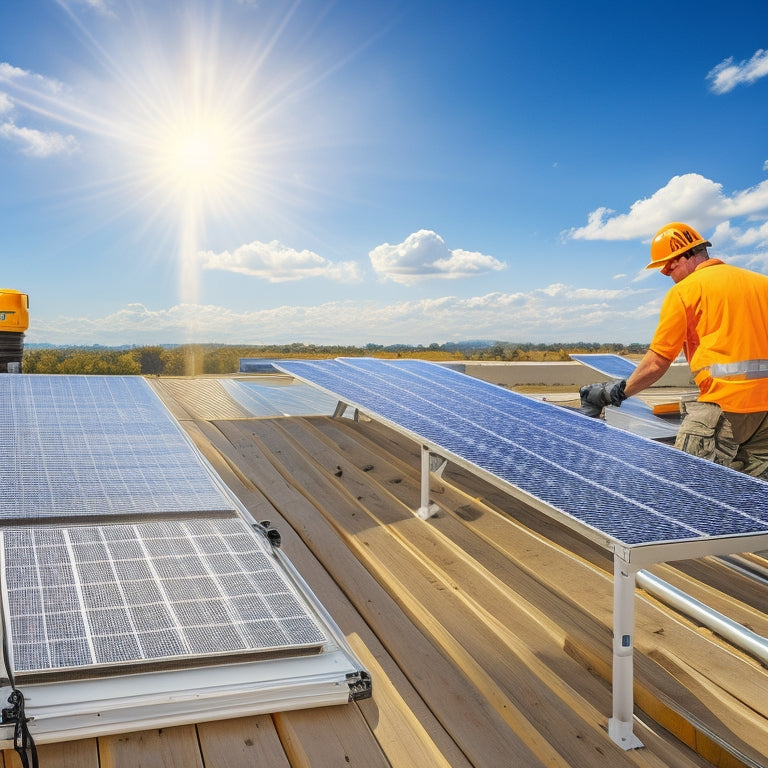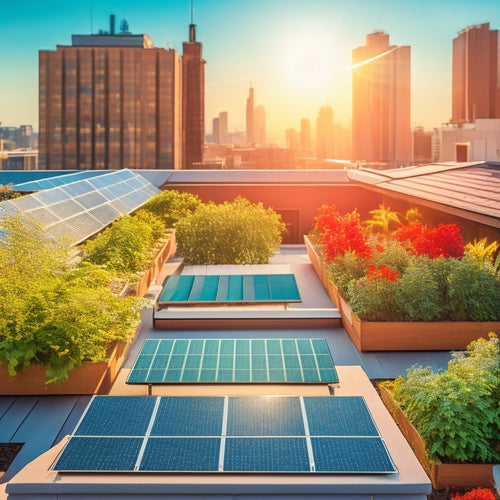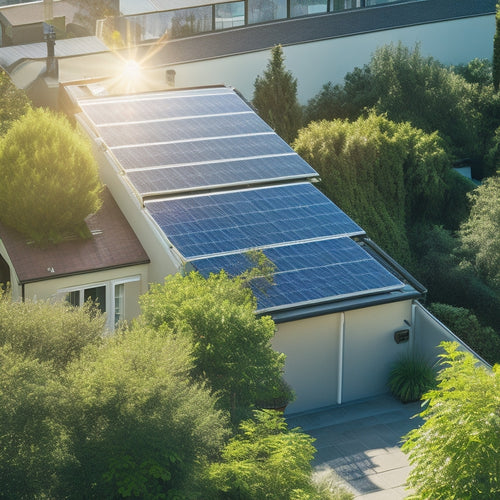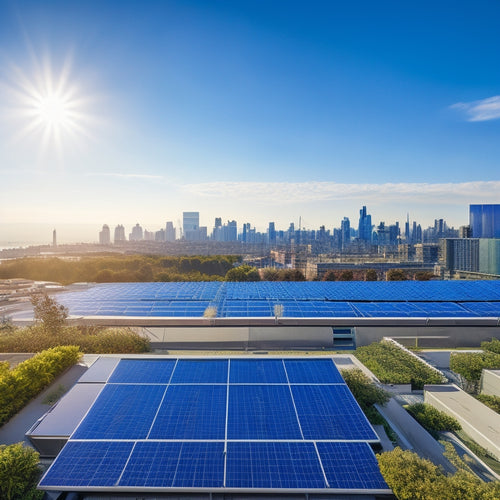
3 Essential Steps for Installing Solar Power at Home
Share
You'll need to assess your home's solar potential by evaluating your roof's size and orientation, available space, and local building codes. Next, choose the right solar system by determining your energy needs, selecting suitable panels and inverters, and considering energy storage options. Finally, guarantee a smooth installation and maintenance process by hiring a qualified professional, obtaining necessary permits, and scheduling regular system checks. By following these essential steps, you'll be well on your way to utilizing the power of the sun - and there's even more to investigate to make the most of your sustainable energy investment.
Key Takeaways
- Assess your home's solar potential by evaluating roof characteristics, space availability, and local building codes to ensure a suitable installation.
- Choose the right solar system by considering energy needs, technology options, energy storage, and inverter selection to meet your specific requirements.
- Ensure a successful installation by hiring a qualified professional, obtaining necessary permits, and conducting regular maintenance for optimal system performance.
- Consider the installation timeline, which typically takes 3-5 days, and plan accordingly to minimize disruptions to your daily routine.
- Implement a monitoring system to track real-time energy production and consumption, enabling you to optimize your energy usage and identify potential issues early on.
Assess Your Home's Solar Potential
Your solar-powered future begins with a thorough assessment of your home's solar potential. This vital step involves a site evaluation to determine the suitability of your property for solar power generation.
You'll need to evaluate factors such as the size and orientation of your roof, the amount of available space, and the local building codes and regulations.
A shading analysis is also essential to identify any obstacles that might be blocking sunlight from reaching your solar panels. This includes trees, buildings, and other structures that could cast shadows on your roof.
Choosing the Right Solar System
One key consideration when shifting to solar power is selecting a system that meets your specific energy needs and budget.
You'll want to evaluate various solar technology options, including monocrystalline, polycrystalline, and thin-film panels, to determine which type is best suited for your climate and energy requirements. Additionally, consider energy storage solutions, such as batteries, to guarantee a stable power supply during periods of low sunlight or at night.
When choosing a solar system, you should also consider the inverter type, mounting options, and monitoring systems.
Inverters convert DC power from the panels to AC power for your home, while mounting options range from roof-mounted to ground-mounted systems. Monitoring systems allow you to track your energy production and consumption in real-time.
It's essential to assess your energy usage patterns, including your daily energy consumption and peak usage hours, to determine the ideal system size and configuration for your home.
Installation and Maintenance Essentials
The solar system's performance relies heavily on a proper installation, which is why it's vital to hire a qualified professional to handle the job. They'll make certain that your system is installed correctly and meets local building codes.
Before installation begins, you'll need to traverse the permitting process, which involves obtaining necessary permits and approvals from your local government. This process can take several weeks to a few months, depending on your location and the complexity of your project.
Once you've obtained the necessary permits, your installation timeline will depend on the size and complexity of your system. On average, a typical residential solar installation takes around 3-5 days. During this time, your installer will connect the solar panels to your electrical panel and confirm that everything is functioning correctly.
After installation, it's pivotal to maintain your system to guarantee peak performance. This includes regular cleaning of the panels, monitoring system performance, and addressing any issues that arise.
Frequently Asked Questions
Can I Install Solar Panels Myself to Save on Labor Costs?
You can attempt a DIY solar installation to cut labor costs, but be prepared to handle complex electrical work and obtain necessary installation permits, ensuring a safe and compliant setup that meets local building codes.
How Long Will It Take to Recoup My Solar Power Investment?
A million bucks later, you'll finally break even! But seriously, your payback period depends on factors like system size, local incentives, and energy usage. Conduct a thorough investment analysis to determine when you'll recoup your solar power investment, typically ranging from 5 to 15 years.
Are Solar Panels Affected by Weather Conditions Like Hail or Snow?
You're wondering if solar panels can withstand harsh weather conditions. Rest assured, they're designed to resist hail damage and snow accumulation. In fact, most panels are tested to endure hailstones up to 1 inch in diameter and snow loads of up to 50 pounds per square foot.
Can I Sell Excess Energy Generated Back to the Grid?
You can sell excess energy back to the grid through net metering, earning energy credits that offset your utility bills; investigate net metering benefits and energy credit options to maximize your solar investment's financial returns.
Will Solar Panels Increase My Property's Value?
You'll be astonished to know that installing solar panels can skyrocket your property's value by up to 17%! This significant enhancement is due to the numerous solar panel benefits, which are formally recognized during a property appraisal, increasing your home's desirability and resale value.
Conclusion
You've assessed your home's solar potential, chosen the right solar system, and now it's time to take the final step: installation and maintenance. By following these three essential steps, you'll be utilizing the power of the sun in no time. You'll reduce your carbon footprint, lower your energy bills, and increase your home's value. Plus, with proper maintenance, your solar system will provide clean energy for years to come. Get ready to reap the benefits of solar power and enjoy a brighter, more sustainable future.
Related Posts
-

Solar System Installation Rebates and Tax Credits
Solar system installations offer beneficial rebates and tax credits that greatly cut your initial costs. You can bene...
-

How Solar Panels Reduce Electricity Bills
Solar panels can drastically cut your electricity bills by utilizing sunlight to generate your own energy. This decre...
-

Business Solar Investments for Cost-Effective Sustainability
Investing in solar energy is a smart move for your business, providing a solid foundation for cost-effective sustaina...


